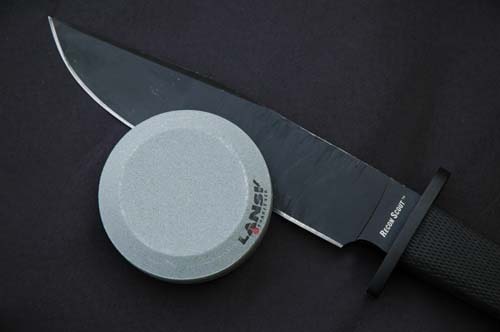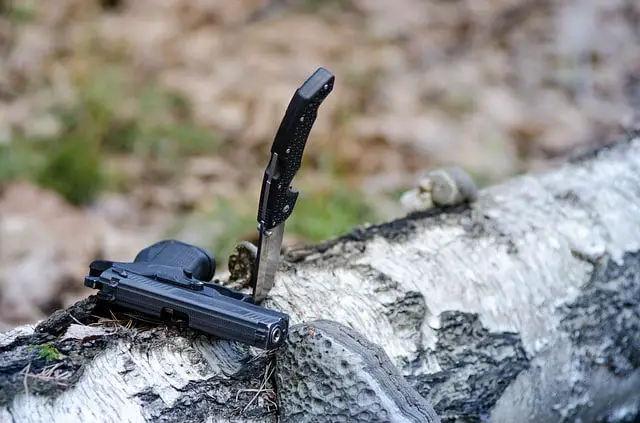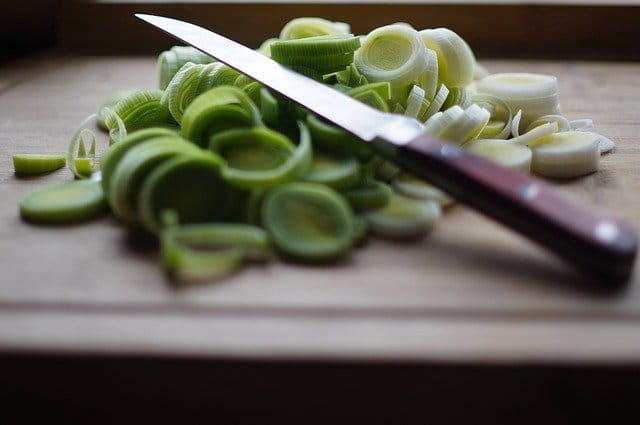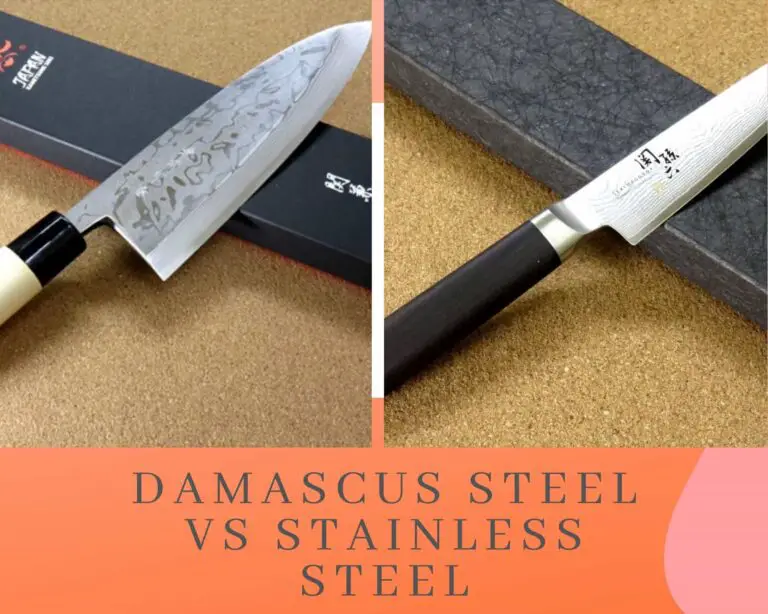The honing vs sharpening debate comes from a lot of backgrounds.
I won’t try to behave like I know what goes on in everyone’s minds. For me, this topic caught my attention when I was trying to find out how best to keep my knives sharp and performing for longer.
Everyone knows a sharp knife is the only kind of knife.
For a guy that has done an extensive knife-sharpening stone guide, you know I don’t take my sharpening lightly.
But then, how does honing compare? How does it help you to get a sharp knife, and why should you care?
Table of Contents
Understanding Blade Dullness
Before we get into the honing steel and sharpening stone business for the day, we need to understand something here.
Everyone here knows that a knife has lost its sharpness when it can no longer cut through things with the ease that it used to. I even developed an entire guide on how to test the dullness of your knife.
However, that is just the effect of the dullness and not the cause.
Kitchen knives (or any kind of knives, for that matter) get dull for two reasons:
- The blade/ knife edge gets dull from the slow wear and tear of the sides that occur during usage. Coming in contact with surfaces can also cause your knife to lose sharpness.
- The edge of the knife has been pushed out of alignment. You might not see this unless you take a closer look, at what time you see the sharp edge looking serrated/ teeth-y at some points.
Now that we understand what causes your knife to go dull, you can better understand why you need either or both honing and sharpening.
Difference Between Honing and Sharpening
The difference between honing and sharpening might not be as clear as night and day, but it is not muddled up either.
To make things simpler and interesting, I will discuss these differences under a handful of headings.
Purpose
You sharpen your knives to take out the dullness and keep them ready for better, faster, and more efficient use. Honing can be practiced on an already sharp edge that has lost its alignment, pushing the knife blade’s edge back into shape.
Result
After running your knife through the knife sharpener – and doing it properly too – you would have a blade that can cut through almost anything on your hand.

Taking your knives for a visit to the honing rod gives off the impression of being sharper, but that is not what the tool did. It, instead, aligned your knife edge better such that you see it as being sharper than before.
Although it might not directly work for sharpening, honing also helps keep your knives sharp.
Application
A top reason why I don’t recommend sharpening your knives all the time when you can simply hone them down is to ensure longevity.
When you sharpen your knife, you indirectly remove material from the surface of the knife. The constant wearing away of the blade’s sharp edge is what keeps it sharp over time.
If you keep doing that whenever the knife is dull, you will soon ruin the entire knife.
Sometimes, keep the knife sharpener and only take your kitchen knives (or any other knife set) to the honing grounds.
I just recently found this out too. Considering all my love for knives and their functionality in the kitchen, you should not beat yourself if you haven’t thought about this before.
Tools
Since they are different operations, it is just logical that honing and sharpening does not use the same set of tools.
Those who have gone through the whetstone knife sharpening guide already know that sharpening stones are great for returning a dull knife to its past glory. You can also change the status of a dull knife with other unconventional methods when you don’t have a knife sharpener handy.
For those who use the new e-knives, make sure you have a good electric knife sharpener handy.
When it comes to honing, you could use a honing rod or honing steel.
The honing rod is usually made of steel, anyway, so I don’t know why the entire thing is not just called honing steel.
Frequency of Application
Done right, you should not sharpen knives even half as much as you hone them.
Depending on how well you use your knife, the blade will get dull at varying timeframes and degrees. When that happens, keep honing the knives till they are too dull to respond to honing anymore.
At that point, go for sharpening to restore the knife to its former glory.
This way, you reduce the rate at which sharpening removes material from the surface of the knife which can ruin it faster.
How to hone your knife properly
Instead of telling you, why not show you?
I found this really helpful video from the guys over at Cutlery and More, and I think you would love it too.
Do Honing Steels Wear Out?
Most honing steels are built to last and will take between 5-10 years to need replacing. Traditional honing steel is great but most reports favor the diamond honing steel as being the better of the duo. Given the internal strength of the diamond material, I don’t doubt that it does better truly.
I found some traditional and diamond honing steels I believe you will love over at Amazon also. They are selling fast and have good reviews behind them, so I know they must be worth their salt:
- Dalstrong Carbon Steel Honing Rod
- Green Elephant Ceramic Honing Rod
- Zwilling Stainless Steel Honing Rod
- Mercer Diamond Honing Rod
What is the difference between honing and stropping?
When I first discussed stropping and how to do it properly on this blog, I mentioned that it is the process after sharpening.
Well, now, I am going to expand it even further. Stropping is what you do after sharpening and honing your knives.
After sharpening your knife, there will certainly be some microscopic teeth on the kitchen knife. Even after honing, there is a high chance that some of these teeth remain. Credit to honing though as it takes out most of the teeth anyway.
Take the same knife to a strop afterward and you have your knife back to its professional self, so much that a chef would be proud to hold it.
Does a honing steel brand matter?
I only stick with the top and trusted brands when buying knives. I don’t do the same for other accessories (like honing steel), though.
This does not mean that you cannot buy from your favorite brands still, but I can spend my money better elsewhere.
I only need to make sure that the steel is hard and sturdy enough and it gets the job done.
A honing steel/ rod does not come with any bells or whistles and is just meant to do one thing. I wouldn’t fuss too much about what brand makes it unless they fumble the thing badly.
Should you hone your knife today?
If you have a new knife, it is not time to hone it yet. Let the knife do some work first before you start bothering it with all that.
For knives that you have had for some time, try slicing through a tomato, paper (try different grades of paper), or other food items. If your knife doesn’t slice through pretty easily, or it leaves serrated edges on what you’re slicing, try honing it first.
When that does not work – and this is only when you are sure you have honed the knife properly – go sharpen that tool.
Final Words
Whether you have Japanese knives, sport some sturdy chef’s knife, or other forms of knives, the honing and sharpening process allows you to properly care for your investment.
If you have not already started, now is the time to lay off the constant sharpening and go with honing sometimes. If it doesn’t work, the top chefs, knife experts and other professional users would not recommend it.







